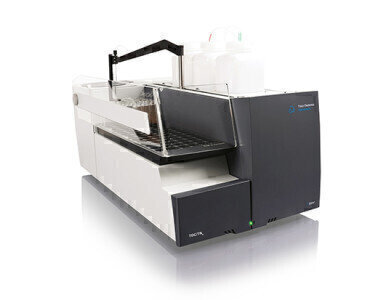Environmental Laboratory
Xpert TOC analysis of seawater
Sep 26 2019
Monitoring levels of organic carbon in seawater has become an important parameter for the understanding of the global carbon cycle. Therefore, accurate determination of TOC concentrations in seawater is critical. Total Organic Carbon analysis in seawater matrices can be more challenging due to the composition of water, salts and other substances including dissolved inorganic as well as organic materials. The XPERT-TOC analyser is designed to analyse complex mixtures with a variety of particle sizes and wide concentration range, without the use of any additional options or accessories.
TE Instrument’s XPERT-TOC is equipped with an integrated 65 position autosampler including a vial stirrer for each location. When running NPOC analyses, the samples are automatically pretreated. Prior to the sample pick up the sampler needle is washed and the sample is homogenized. The sample will be aspirated by the internal syringe driver into a sample holding loop without contacting any valve or the internal syringe itself. Due to the internal diameter of the tubing and the injection needle, samples containing particles up to 800µm can easily be analysed.
The sample is introduced directly into the combustion tube which is held at a temperature of 680°C in the furnace. Under constant carrier gas conditions, the organic carbon in the sample is converted in the combustion tube to carbon dioxide.
The gasses from the combusted sample flow through the condenser where the moisture/water vapour condensates. Subsequently, halogens and acid fumes are trapped and removed by the scrubber. As final step, the gasses flow through a 5 µm filter to trap any remaining aerosols or particles before the flow continuous to the detector.
The carbon dioxide gas in the sample stream is guided through a Non-Dispersive Infrared Detector (NDIR) for quantification. The signal response from the detector is directly linear proportional to the concentration of the carbon dioxide. The reported results can be transferred into any available LIMS environment.
The calibration curve (>0.999 r2) is generated from standards prepared from a single stock standard of 100 mg/L. The stock standard is prepared by dissolving anhydrous potassium hydrogen phthalate in UPW. The stock standard was further diluted to generate the required standards in the range of 0 – 100 mg/L. Obtained results can be found in the table.
For live on-site demonstrations or if you wish to receive more information, please contact TE Instruments.
Digital Edition
AET 28.2 April/May 2024
May 2024
Business News - Teledyne Marine expands with the acquisition of Valeport - Signal partners with gas analysis experts in Korea Air Monitoring - Continuous Fine Particulate Emission Monitor...
View all digital editions
Events
Jul 30 2024 Jakarta, Indonesia
China Energy Summit & Exhibition
Jul 31 2024 Beijing, China
2024 Beijing International Coal & Mining Exhibition
Aug 07 2024 Beijing, China
IWA World Water Congress & Exhibition
Aug 11 2024 Toronto, Canada
Aug 25 2024 Stockholm, Sweden and online









.jpg)








